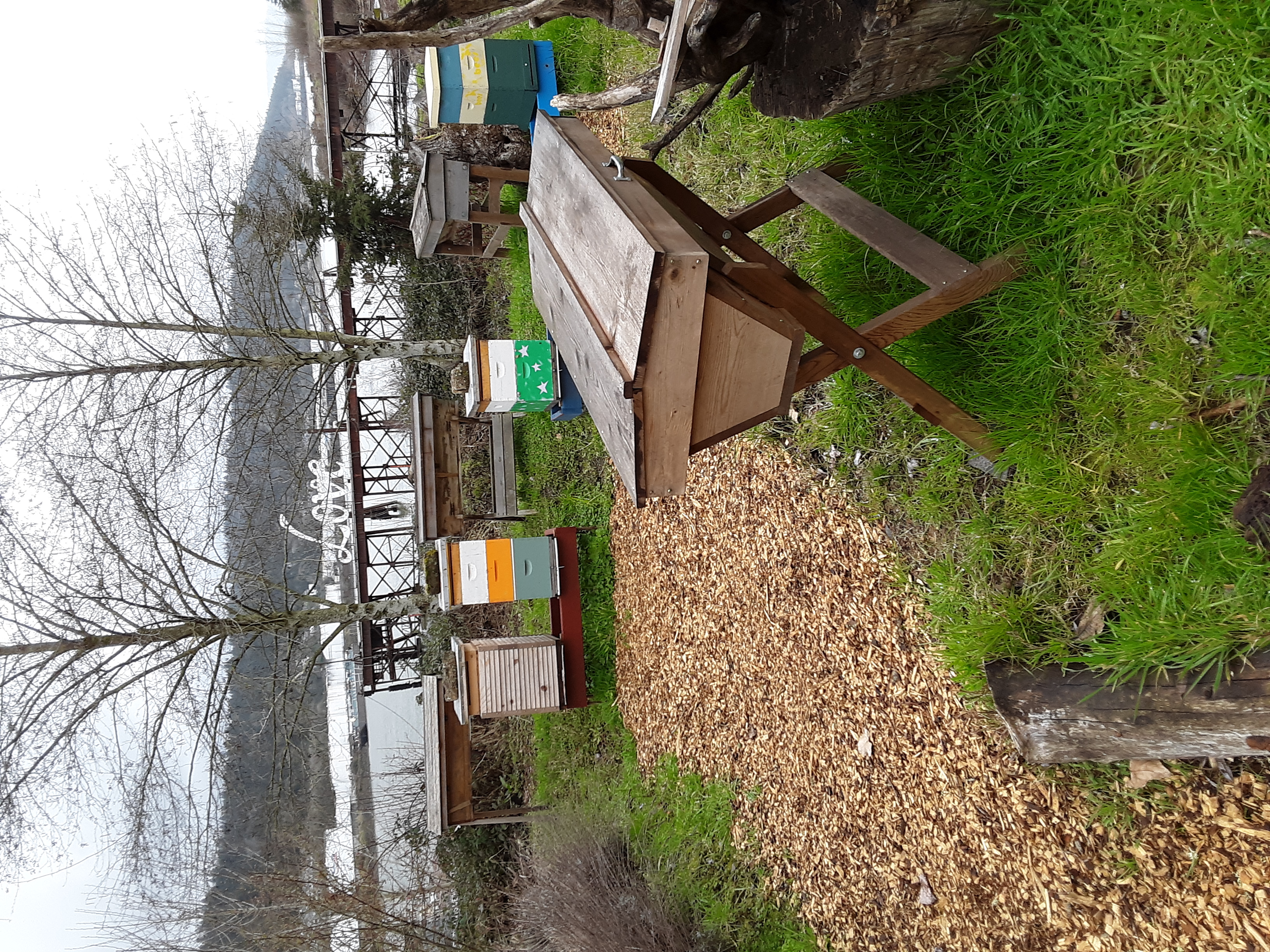Highly defensive colonies; bees stinging for no apparent reason; heightened response to colony disturbance; persistent bees following or surrounding humans or animals near the apiaryapiary:
a place where beehives and beekeeping equipment are located; also called a bee yard. An out-apiary is a site away from the owner’s residence. . Stinging death of small animals in vicinity of the apiaryapiary:
. Stinging death of small animals in vicinity of the apiaryapiary:
a place where beehives and beekeeping equipment are located; also called a bee yard. An out-apiary is a site away from the owner’s residence. that are confined to pens or unable to escape, especially following colony manipulations or disturbances. Confirmation of Africanized honey bee population establishment in an apiaryapiary:
that are confined to pens or unable to escape, especially following colony manipulations or disturbances. Confirmation of Africanized honey bee population establishment in an apiaryapiary:
a place where beehives and beekeeping equipment are located; also called a bee yard. An out-apiary is a site away from the owner’s residence. or other area was originally done via morphometric measurements (Fast Africanized Bee Identification System, FABIS) but is now done through mDNA markers.
or other area was originally done via morphometric measurements (Fast Africanized Bee Identification System, FABIS) but is now done through mDNA markers.
The Africanized honey bee is a hybrid bee population resulting from the cross between Apis mellifera scutellata, an African bee native from South Africa to Ethiopia imported into Brazil in the mid-1950s, and the European-derived honey bees then present in South America. The imported African bee stock was intended to improve the European stock that was previously imported into South America through a breeding program designed to reduce its defensiveness. However, the African bee stock (virtually unchanged) was accidentally released and then subsequently widely distributed as queen stock (without any mitigation of defensiveness) to Brazilian beekeepers.
In addition to a more defensive colony, Africanized bees exhibit a high swarming or absconding tendency, high propolis use, greater brood production and viability, shorter development time (19 days for workers, 15 days on average for queens), variable (generally lower) honey production, greater hygienic and grooming behaviors, and larger pollen stores. They have reduced problems with varroa mites.
Stinging deaths of small animals confined to pens or confined animals unable to escape attacking bees is often an early indication of Africanization in an apiaryapiary:
a place where beehives and beekeeping equipment are located; also called a bee yard. An out-apiary is a site away from the owner’s residence. previously occupied by gentle bees. Confirmation of population establishment in an apiaryapiary:
previously occupied by gentle bees. Confirmation of population establishment in an apiaryapiary:
a place where beehives and beekeeping equipment are located; also called a bee yard. An out-apiary is a site away from the owner’s residence. or area was originally done via morphometric measurements (FABIS), but it is now done through mDNA markers.
or area was originally done via morphometric measurements (FABIS), but it is now done through mDNA markers.
In case of a highly defensive colony, the beekeeper may need to euthanize the adult bees and eliminate the brood.
Caron, DM. 2001. Africanized Honey Bees in the Americas. Wicwas Press, Kalamazoo, MI, US. 228 pp.
Caron, DM. 2021. Handling Defensive Bees. American Bee Journal. April: 421-424. https://bluetoad.com/publication/?i=699449&p=73&view=issueViewer and https://bluetoad.com/publication/?m=5417&i=699449&view=articleBrowser&article_id=3970774&ver=html5
Africanized Honey Bee. University of Florida/IFAS Extension. Accessed 2023. https://edis.ifas.ufl.edu/entity/topic/africanized_honey_bee
Defensive Bees. California Master Beekeeper Program. Accessed 2023. https://cambp.ucdavis.edu/defensive-honey-bees